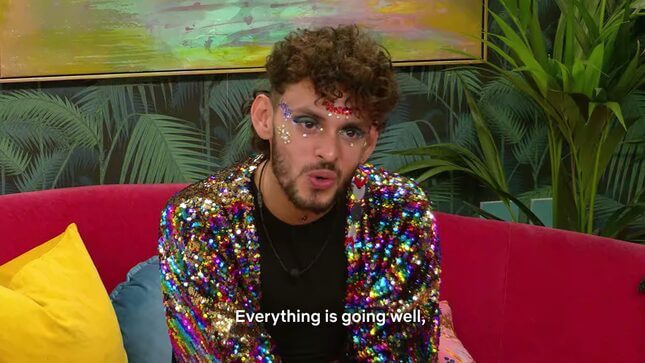

Remakes are rarely better than the original. But spin-offs, at least in reality television, are nearly always superior. Like Bravo’s Below Deck? The drama is nothing compared to Below Deck: Mediterranean. The Real Housewives of Beverly Hills? There’s more fun on Vanderpump Rules. The Bachelor franchise confirms it, too—I routinely suffer through flagship shows just to know which Lauren is which when Bachelor in Paradise comes around each summer. After binging The Circle on Netflix at the beginning of 2020, I was fully prepared for The Circle Brazil to be the superior of the two when it appeared in my queue three months later. And yes, it is.
As with the original, eight people enter a building in the U.K. with the hopes of winning a six-digit prize (even though the U.S. show and the Brazilian show use b-roll of major cities in both countries, all Circle programming is filmed in the same building in England, which might explain why the decor is Love Island-levels gauche.) Each party is isolated to a one-bedroom apartment and is only allowed to interact with other players through a social media app called The Circle. Some choose to enter as a catfish; others embody a stylized version of themselves. They upload a profile with a few pictures and communicate exclusively through group chats. Tone and nuance are reserved for the footage grabbed from surveillance cameras in each apartment: because relationships are built on flattened speech and witty quips in text, the only way to truly know what is going on is to watch each character speak to themselves aloud. It is the height of voyeurism, and it only works when the players themselves are interesting. Each week, the most popular profiles become “influencers,” and vote out one of the others.
On the U.S. show, I can only vouch for a few personalities: Joey Sasso, the flirtatious and non-threatening guido; Karyn Blanco, the catfish with a heart of gold; Sammie Cimarell, the only woman to make it to the final four, and that’s if I’m being generous. On the Brazilian show, however, everyone has their charm. Lorayne Oliver is Sammie if Sammie spoke no ill will against anyone. Marina Gregory is an enthusiastic flight attendant moonlighting as an aspiring singer-songwriter because “music brings people together.” She is also plus-size, and never mentions it—unlike on the U.S. version, where those characters demanded constant commentary about #empowerment. The hilarious moral center of the show, Raphael Dumaresq, fulfills the role of everyone’s BFF Chris Sapphire, but with less formulaic one-liners. Of the four episodes I have seen, The Circle Brazil crewe approaches the game as if it really is an exercise in friendship. They are less manipulative than their American counterparts and seem to really only vote off the people they connect with the least, as opposed to strategizing against deception. Teamwork is their tactic.
That does not mean the show is without conflict. In one episode, the thirtysomething blacksmith Rob Vulcan poses as a young blacksmith woman, Julia, and greets a new character by assuming she is trans. At first, the crew views it as an ignorant oversight, but when he proceeds to ask about the gender on her birth certificate, Dumaresq jumps in to correct him. Everyone agrees. By the next episode, Rob is gone. They voted him out.I’m not sure such an incriminating exchange would be corrected within an hour block on the American show. It was nice to see such an upsetting situation proactively addressed and resolved within the same breath. In reality television, a format prone to hyperbolizing human faults and hate rhetoric, it was refreshing to see the issue handled and intolerance removed.
Beyond the drama of the first four episodes of The Circle Brazil, I also felt like I was beginning to learn key phrases in Portuguese because so much of the show is based on the written word, like much of social media. Of course, I wasn’t really getting an education; I was just listening to the language and reading the English translation, but it was still a fun exercise in picking up slang. I plan to incorporate “huashuashuashua,” in place of “lmao,” in the future.
Despite the required reading in watching The Circle Brazil, the show is deliciously mindless and offers brief reassurance that people can be good. That’s all I need to binge these days.
A previous version of this story featured a headline that compared the Brazilian Circle to the original. The headline has been updated to reflect that we’re comparing it to the American series, not the original U.K. version.